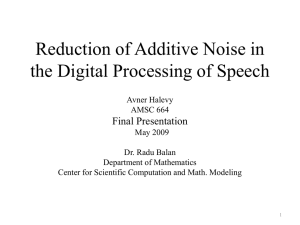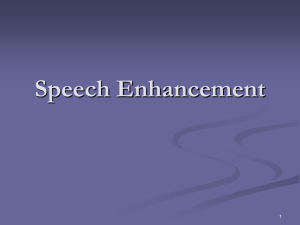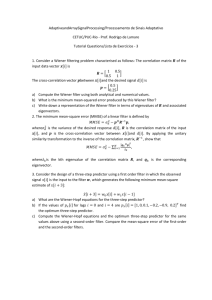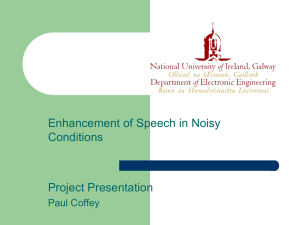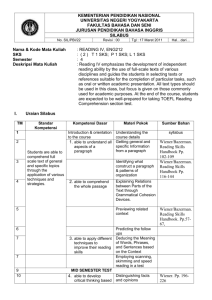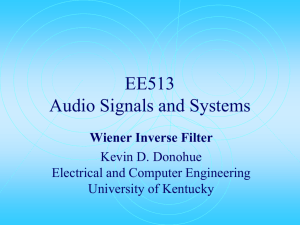ADAPTIVE WIENER FILTERING APPROACH FOR SPEECH
advertisement
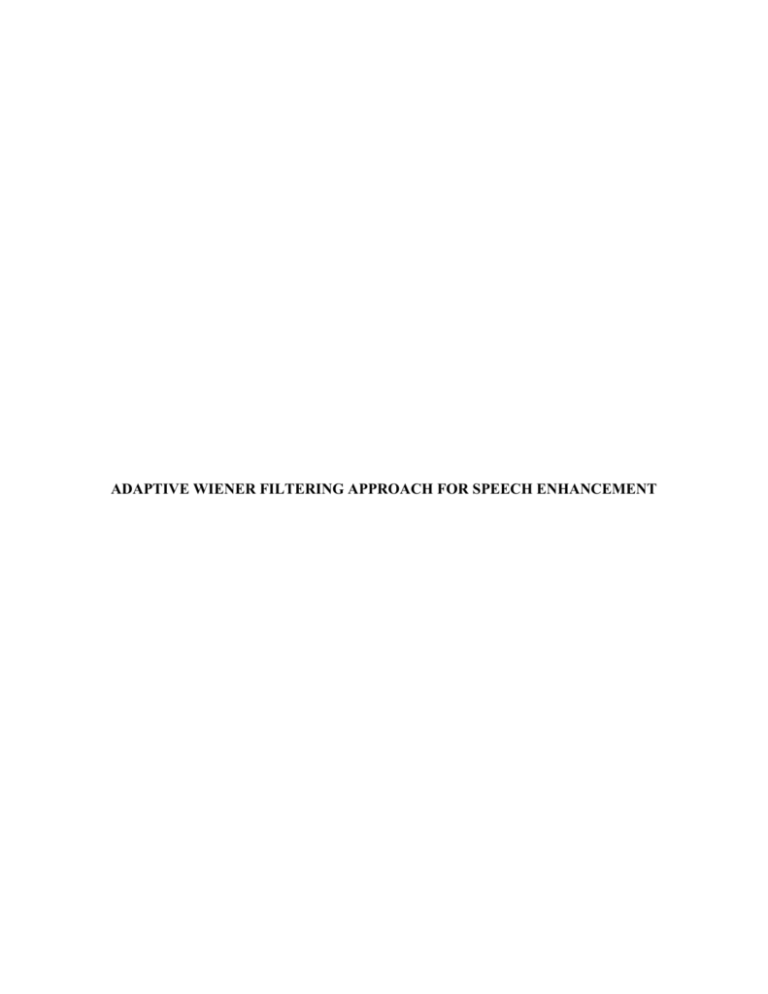
ADAPTIVE WIENER FILTERING APPROACH FOR SPEECH ENHANCEMENT ABSTRACT This paper proposes the application of the Wiener filter in an adaptive manner in speech enhancement. The proposed adaptive Wiener filter depends on the adaptation of the filter transfer function from sample to sample based on the speech signal statistics(mean and variance). The adaptive Wiener filter is implemented in time domain rather than in frequency domain to accommodate for the varying nature of the speech signal. The proposed method is compared to the traditional Wiener filter and spectral subtraction methods and the results reveal its superiority. INTRODUCTION Speech enhancement is one of the most important topics in speech signal processing. Several techniques have been proposed for this purpose like the spectral subtraction approach, the signal subspace approach, adaptive noise canceling and the iterative Wiener filter. The performances of these techniques depend on quality and intelligibility of the processed speech signal. The improvement of the speech signal-to noise ratio (SNR) is the target of most techniques. Spectral subtraction is the earliest method for enhancing speech degraded by additive noise. This technique estimates the spectrum of the clean (noise-free) signal by the subtraction of the estimated noise magnitude spectrum from the noisy signal magnitude spectrum while keeping the phase spectrum of the noisy signal. The drawback of this technique is the residual noise. PROPOSED METHOD Spectral subtraction can be categorized as a non-parametric approach, which simply needs an estimate of the noise spectrum. It is assume that there is an estimate of the noise spectrum that is typically estimated during periods of speaker silence. Let x(n) be a noisy speech signal x (n)= s(n)+v(n) FIGURE 1: TYPICAL ADAPTIVE SPEECH ENHANCEMENT SYSTEM FOR ADDITIVE NOISE REDUCTION CONCLUSION An adaptive Wiener filter approach for speech enhancement is proposed in this paper. This approach depends on the adaptation of the filter transfer function from sample to sample based on the speech signal statistics (mean and variance). This result indicates that the proposed approach provides the best SNR improvement among the spectral subtraction approach and the traditional Wiener filter approach in frequency domain. The results also indicate that the proposed approach can treat musical noise better than the spectral subtraction approach and it can avoid the drawbacks of Wiener filter in frequency domain.
